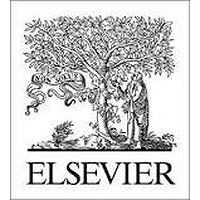The mycophenolic acid producing ascomycete Penicillium brevicompactum is considered to be an anamorphic (asexual) species, for which a sexual cycle was never observed. However, since recent reports of otherwise asexually propagating filamentous fungi have demonstrated a sexual cycle controlled by mating type loci, we carried out a molecular analysis of mating type loci from P. brevicompactum. Using data from extensive DNA sequencing analysis, we determined the mating type loci from 22 strains derived from various type culture collections. We found 8 strains carrying a MAT1-1 locus encoding a 362 amino acid alpha domain transcription factor. The other 14 possessed a MAT1-2 locus encoding a 298 amino acid HMG domain transcription factor. cDNA analysis confirmed that both mating type loci are transcriptionally expressed. The karyotype of six selected strains, determined using contour-clamped homogeneous electric field (CHEF) electrophoresis, demonstrated distinct differences in size and numbers of chromosomes between the strains investigated. Interestingly, our phylogenetic survey of 72 strains from 11 different Penicillium species revealed that MAT genes serve as excellent molecular markers to determine phylogenetic relationships among species closely related to P. brevicompactum. Based on our sequencing results, we constructed transformation vectors for site-specific deletion of mating type loci from two selected strains of opposite mating type. Complementation strains were constructed containing both the mating type locus deletion cassette and a MAT-egfp fusion gene. These strains were used for comparative phenotypic analyses between strains containing or lacking the mating type gene. Whereas all MAT1-2 strains were indistinguishable, the MATT-1 and MAT1-1-1 deletion strains differed distinctly. The MAT1-1-1 deletion strain produced more conidiospores on solid media, but smaller pellets in liquid media. This is probably the consequence of fewer conidial germ tubes than with the wild type mating type strain. Finally, we showed that the MAT-EGPF fusion protein is localized to the nuclei and detectable in protein samples by Western analysis. Together, our results suggest that the asexually propagating fungus P. brevicompactum might be a heterothallic species with a cryptic sexual life cycle. (C) 2020 British Mycological Society. Published by Elsevier Ltd. All rights reserved.

Molecular analysis of mating type loci from the mycophenolic acid producer Penicillium brevicompactum: Phylogeny and MAT protein characterization suggest a cryptic sexual life cycle
Review badges
0 pre-pub reviews
0 post-pub reviews
